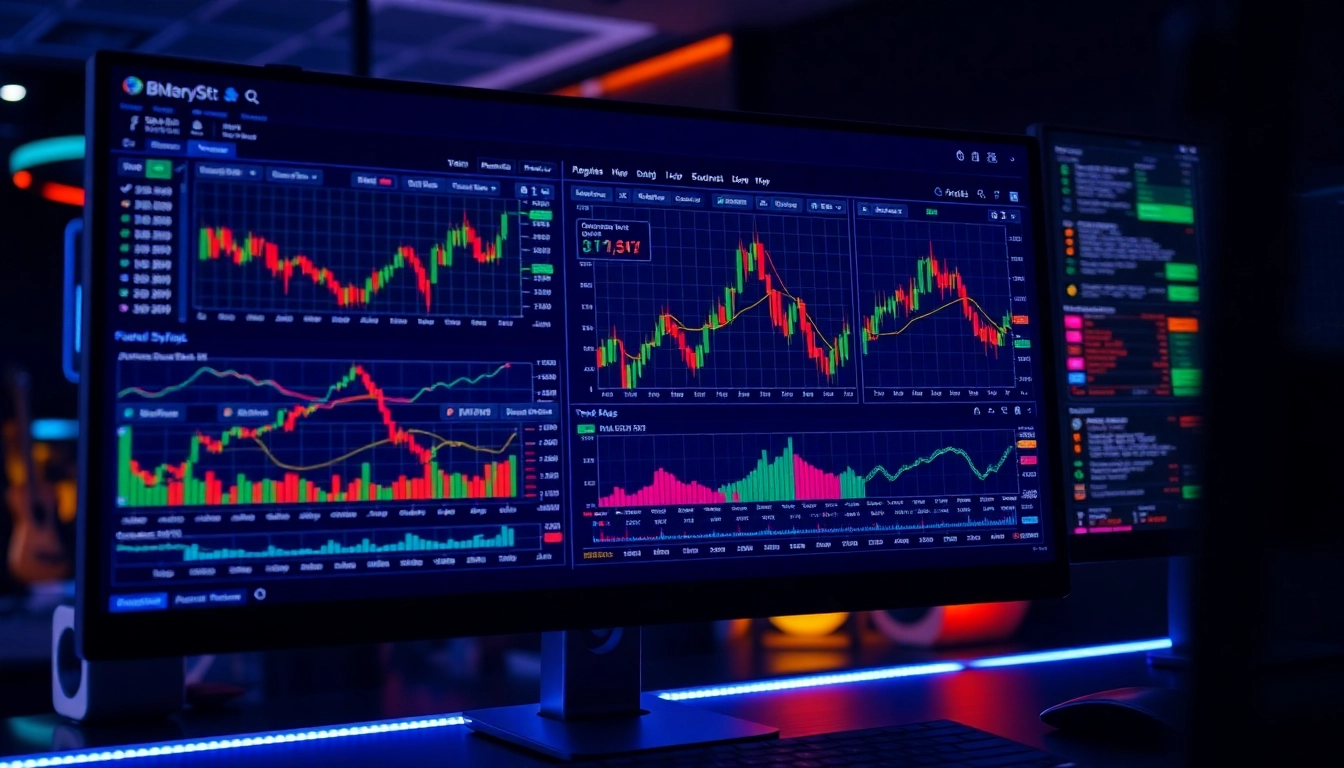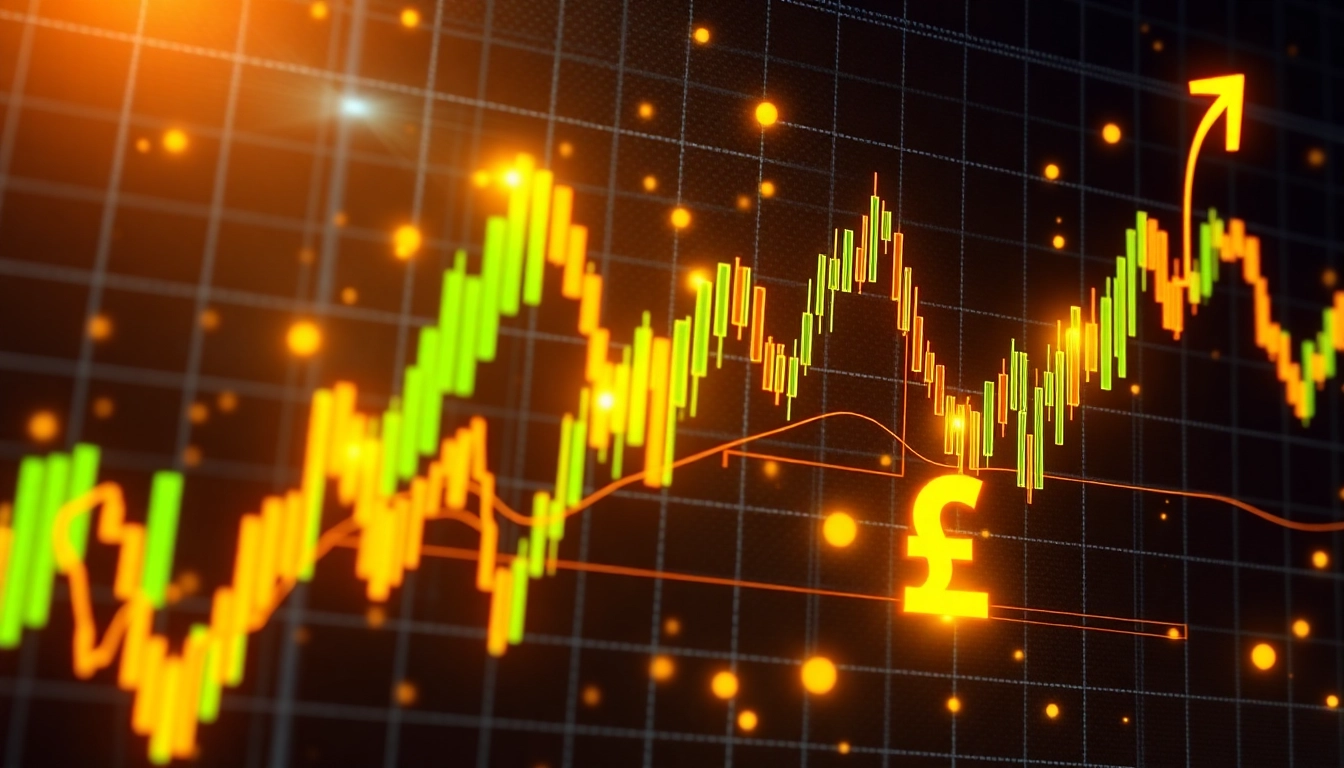Understanding Trading View and Its Core Features
In today’s fast-paced financial markets, traders and investors require sophisticated tools to analyze market data accurately and efficiently. trading view has emerged as a leading platform that consolidates comprehensive charting, analysis, and social features into a seamless experience. It empowers users to visualize market trends, develop strategies, and connect with a global community of traders. This section explores the essence of TradingView, highlighting its core features that make it indispensable for modern trading professionals.
Defining Trading View: A Comprehensive Market Analysis Tool
TradingView is a web-based platform designed for charting, technical analysis, and social interaction among traders and investors. Its intuitive interface caters to both beginners and seasoned professionals, enabling users to access real-time data across various asset classes such as stocks, forex, cryptocurrencies, commodities, and indices. The platform’s primary appeal lies in its versatile charting tools coupled with an active community that discusses strategies, market conditions, and trading ideas.
Unlike traditional trading terminals that often require proprietary software or complex integrations, TradingView offers accessible, cloud-based access from any device with an internet connection. This democratizes market analysis, making it available to a broader audience worldwide, and creates an ecosystem where learning, sharing, and executing trades happen simultaneously.
Key Features for Traders and Investors
- Advanced Charting Tools: Interactive charts with a vast array of technical indicators, drawing tools, and customizable layouts.
- Real-Time Data and Alerts: Instant updates on market movements, price alerts, and notifications tailored to user preferences.
- Community and Social Networking: Watch discussions, share ideas, and collaborate with a global network of traders.
- Multi-Device Compatibility: Access via web browsers, mobile applications, and desktop software, ensuring flexibility in trading routines.
- Integration and Automation: Compatibility with brokers and trading strategies for automated execution and backtesting.
How Trading View Compares to Competitors
While platforms like MetaTrader, ThinkorSwim, and Webull offer robust trading features, TradingView distinguishes itself through its cloud-based charting, community-driven insights, and user-friendly interface. Its social features facilitate a collaborative environment where traders learn from each other, enhancing decision-making quality. Additionally, TradingView’s extensive library of scripts, indicators, and customizable options surpasses many competitors, offering users tailored analytical tools.
Utilizing Trading View for Market Analysis
Charting Tools and Technical Indicators
At the heart of TradingView lies its powerful charting engine. Users can select from multiple chart types such as candlestick, line, bar, and mountain charts, each offering unique insights into price movements. The platform boasts hundreds of technical indicators, including Moving Averages, Relative Strength Index (RSI), Bollinger Bands, MACD, and Fibonacci retracements, among others.
Analysts can layer multiple indicators to generate complex signals or identify market patterns like head and shoulders, double tops/bottoms, or flag formations. The ability to manually draw trendlines, channels, and support/resistance zones enhances contextual understanding and strategic planning. Furthermore, TradingView’s Pine Script enables traders to develop custom indicators and automated strategies, boosting analytical flexibility.
Creating and Managing Watchlists
Effective trading relies on the meticulous monitoring of a curated set of assets. TradingView simplifies this process through its watchlist feature, allowing traders to track stocks, forex pairs, cryptocurrencies, and commodities in real-time. These watchlists are customizable, sortable, and shareable, facilitating quick access to relevant market data.
Advanced features include setting specific price alerts for individual assets, enabling traders to react promptly to market movements. Efficient watchlist management helps prioritize trading opportunities and manage risk exposure effectively.
Implementing Alerts for Market Movements
Market alerts are crucial for timely decision-making. TradingView offers a robust alert system that notifies users via pop-ups, email, or SMS when predefined conditions are met, such as price crossing a support level or a technical indicator signaling overbought conditions. Traders can set alerts on nearly any chart element or indicator, personalizing their market monitoring process and reducing the need for constant manual observation.
Advanced Trading Strategies with Trading View
Using Multiple Timeframes for Better Insights
Analyzing assets across multiple timeframes provides a comprehensive perspective, filtering out noise and confirming trend directions. TradingView enables traders to overlay or compare charts of different durations—such as daily, hourly, and minute charts—within a single workspace. This multi-timeframe analysis aids in identifying entry and exit points, aligning short-term trades with long-term trends for optimal outcomes.
Integrating Drawing Tools for Technical Analysis
Drawing tools are essential for visualizing market structures, support/resistance levels, and trendlines. TradingView’s extensive suite includes Fibonacci retracements, Elliott Wave annotations, Gann fans, and more. These visual aids help traders anticipate potential reversals or breakout points, refine entries, and set targets with higher precision.
Backtesting Strategies on Trading View
Backtesting involves running a trading strategy against historical data to assess its effectiveness. TradingView’s Pine Script editor allows users to design and test automated strategies directly within the platform. By scrutinizing performance metrics like profit factor, drawdowns, and win rates, traders can optimize their approaches before deploying live. This disciplined methodology reduces emotional trading and enhances profitability.
Optimizing Your Trading Workflow
Customizing the Platform for Personal Trading Styles
Personalization is key to efficient trading. TradingView offers extensive customization options—layout adjustments, color themes, indicator setups, and script configurations—allowing traders to craft their unique workspace. Saving templates for different strategies streamlines analysis, while layout toggles enable quick shifts between different asset classes or timeframes.
Mobile vs Desktop: Choosing the Right Device
Flexibility in access is vital. TradingView’s mobile app provides on-the-go charting, alerts, and community engagement, making it suitable for active traders and those who travel. The desktop version offers advanced features, larger screens, and faster data processing—ideal for in-depth analysis and backtesting. Selecting the appropriate device depends on individual trading routines and needs.
Syncing and Sharing Charts for Collaboration
TradingView facilitates seamless synchronization across devices, ensuring a consistent workspace. Additionally, traders can share charts, ideas, and setups publicly or privately, fostering collaboration. This exchange accelerates learning, exposes traders to diverse strategies, and enhances community engagement. Sharing insights also helps in building professional networks valuable for career growth.
Performance Metrics and Continual Improvement
Measuring Trading Success with Trading View Data
Data-driven evaluation is essential for growth. TradingView allows traders to document trade histories, analyze performance metrics, and identify strengths and weaknesses. Tracking metrics such as win/loss ratios, average profits, and drawdowns guides traders to refine their strategies and optimize risk management.
Learning Resources and Community Support
The platform’s vibrant community offers a treasure trove of educational content, including shared scripts, trading ideas, tutorials, and live analysis sessions. Participating in discussions, asking questions, and reviewing others’ setups accelerates skill development and broadens market understanding.
Staying Updated with Market Trends
TradingView’s news feeds, economic calendars, and real-time alerts assist traders in staying ahead of market shifts. Following influential traders and analysts on the platform also helps gauge sentiment and anticipate major moves, enabling proactive trading decisions.



